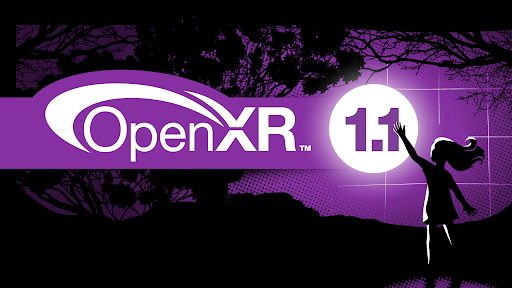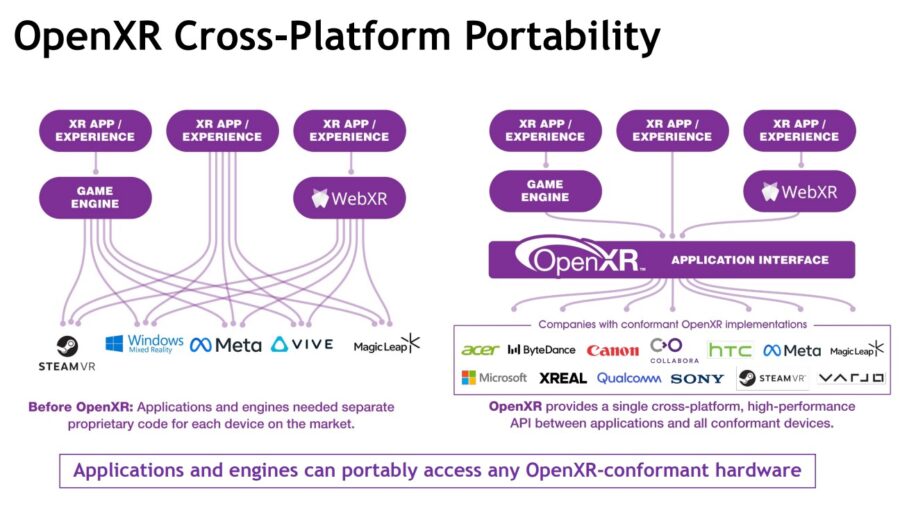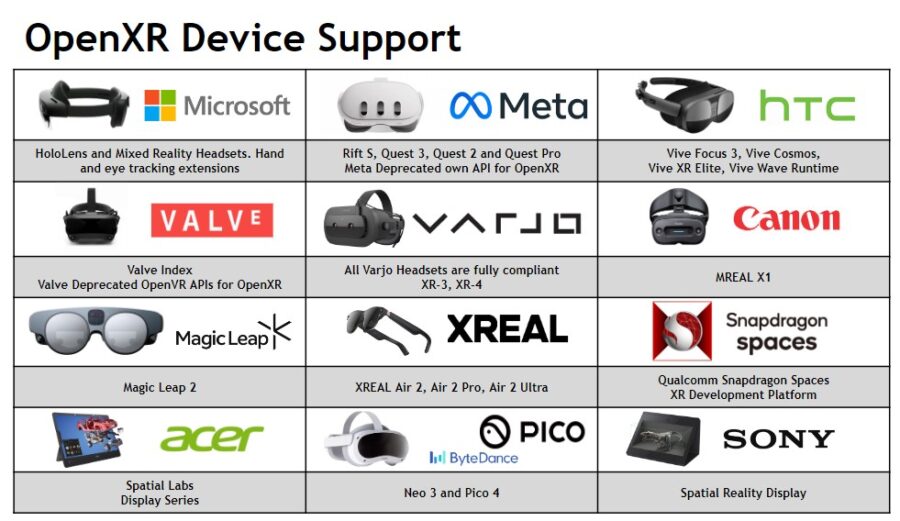
In General XR News
April 15, 2024 – The Khronos Group, an open consortium of industry-leading companies creating advanced interoperability standards for 3D graphics and augmented, virtual and mixed reality (AR/VR/MR – collectively known as XR), has today announced the immediate availability of the OpenXR 1.1 specification, marking a further advancement in cross-platform XR.
OpenXR 1.1 aims to streamline the development of more powerful and efficient XR applications by integrating widely used API extensions directly into its core specification. This enhancement not only reduces the complexity for developers but also minimizes discrepancies across different platforms, promoting a unified development environment.
“OpenXR 1.1 marks a significant milestone in the development of this open standard that has become widely adopted throughout the XR industry,” said Alfredo Muniz, Chair of the OpenXR Working Group. “By simplifying development while fostering innovation, we aim to empower developers to concentrate on creating groundbreaking immersive, cross-platform experiences. OpenXR 1.1 embodies the collective dedication of the Working Group and the extended XR community to refine and advance the OpenXR standard while being responsive to the dynamic requirements of a rapidly evolving ecosystem.
The adoption of OpenXR 1.1 has been widespread, with major hardware vendors such as Acer, ByteDance, Canon, HTC, Magic Leap, Meta, Microsoft, Sony, XREAL, Qualcomm, Valve and Varjo offering conformant OpenXR implementations. OpenXR is also supported by all the major game and rendering engines, including Autodesk VRED, Blender, Godot, NVIDIA’s Omniverse, StereoKit, Unreal Engine, and Unity.

One of the key features of OpenXR 1.1 is the ‘Local Floor’ functionality, which offers a new reference space optimized for standing-scale content without needing calibration procedures. Another addition, ‘Stereo with Foveated Rendering,’ enhances rendering efficiency for XR headsets, crucial for handling high-resolution displays without overburdening the GPU.
Additional updates include improvements to interaction profiles, error handling, and system behavior clarifications, which collectively enhance the robustness and reliability of the development platform. The OpenXR Conformance Test Suite has also been updated to reflect these integrations, supporting consistent implementation across all conformant platforms.
More information about the OpenXR 1.1 specification, including all of the extensions that have been implemented and the enhanced functionality they bring, as well as additional updates, can be found on the Khronos website and on GitHub OpenXR Registry.
Image credit: The Khronos Group
About the author
Sam is the Founder and Managing Editor of Auganix. With a background in research and report writing, he has been covering XR industry news for the past seven years.
